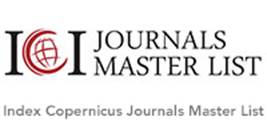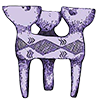The Representation of Motherhood in Netflix Series: The Case of the Maid and Who Were We Running From
DOI:
https://doi.org/10.33831/jws.v26i1.530Keywords:
Motherhood/Mothering, Feminist Experience, Netflix Series, Maid, Who Were We Running From?Abstract
This study, arguing that motherhood/mothering is a political act, analyzes two Netflix productions centered on the theme. To analyze the representation of mothering/motherhood, it applies Fiona Joy Green’s (2020) three central concepts within feminist mothering: oppose the institution of motherhood, view mothering as an empowered and political act, and practice matroreform. The method of this study is Feminist Close Reading, which allows for a comparative analysis of whose narratives will be prioritized, amplifying the voices of marginalized perspectives across various traditions. The research focusing on Netflix delivering duplicate content to a large audience across different countries demonstrates that these productions do not romanticize motherhood, impose outdated gender roles, or define women solely through their familial roles. Instead, they reveal that the mothers in these narratives resist societal norms, representing women characters striving to fulfill their authentic identities and stay true to themselves.
References
Akşit, E. E., (2009), “Anadilde Eğitim ve Kadınlar,” Fe Dergi 1/1:30-38.
Alpteki̇n, D. (2014), Toplumsal Cinsiyet Eşitsizliği Örüntüsünde Kadının Yoksulluğu ve Yoksunlukları.Yoksulluk ve Kadın (Ed.A.Topçuoğlu vd.), İstanbul:Ayrıntı:15-33.
Alankuş, S.,(2012), Why Gender Based Journalism, Gender Based Journalism,(Ed. Sevda Alankuş), İstanbul:bia:25-66.
Aliefendioğlu, H., and Onay Çöker, D. (2024), “Kadınların Mobilitesinin Medyada Görünürlüğü: bianet Erkek Şiddeti Çetelesi Örneği.” Feminist Tahayyül,5(1):28-55.
Bakker, W. and Lia.K. (2013). Balancing Paid Work, Care and Leisure in Post-Separation Households: A Comparison of Single Parents with Co-parents.”Acta Sociologica, 56(2):173–187.
Badinter, É. (1981a). The Myth of Motherhood: An Historical View of the Maternal Instinct. Souvenir Press.
Badinter, É. (1981b). Mother love: Myth and reality. Macmillan.
Bernard, J. (1974).The Future of Motherhood. Boston:Dial Press.
Brady, D.and Rebekah,B. (2012),Targeting, Universalism, and Single-Mother Poverty: A Multilevel Analysis across 18 Affluent Democracies.” Demography, Vol. 49, No.2:719–46.
Bora, A. (2011). Türk Modernleşme Sürecinde Annelik Kimliğinin Dönüşümü. Aynur İlyasoğlu ve Necla Akgökçe. (Yay. Haz.). Yerli Bir Feminizme Doğru içinde (s. 77-107). İstanbul: Sel.
Bluestone, C, and Catherine S.T.L.(1999),Correlates of Parenting Styles in Predominantly Working- and Middle-Class African American Mothers. Journal of Marriage and the Family, Vol. 61, No.4:881–893.
Buğra, A., & Keyder, Ç. (2006). Social policy in a fragmented society: The case of Turkey. UNDP.
Butler M. &W. Pairsley (1980), Women and the Mass Media. Sourcebook for Researchand Action, New York: Human Sciences Press.
Bulut, E., (2025), “Globally connected, nationally restrained: Platform ambiguities and censorship in Turkey's drama production”,
International Journal of Cultural Studies Volume 28, Issue 1, January:99-115.
Burroughs, B. (2018). House of Netflix: Streaming media and digital lore. Popular Communication, 16(1):1–17.
Chase, S. E., & Rogers, M. F. (Eds.). (2001). Mothers and Children: Feminist Analyses and Personal Narratives. Rutgers University Press.
Comerford, L., Jackson, H., & Kosior, K. (Eds.). (2016). Feminist Parenting: Demeter Press.
Chodorow, N. (1978). The Reproduction of Mothering: Psychoanalysis and the Sociology of Gender. University of California Press.
Crittenden, A.(2010), The Price of Motherhood: Why the Most Important Job in the World Is Still the Least Valued, New York: Picador.
Demir, B., (2012), An Example of Alternative Women’s Media: the Pazartesi Magazine, Gender Based Journalism, (Ed. Sevda Alankuş), İstanbul:bia:209-216.
DuPlessis, R.B., (1985), Writing Beyond the Ending: Narrative Strategies of Twentieth-Century Women Writers, Indiana University Press.
Dinnerstein, D. (1976). The Mermaid and the Minotaur: Sexual Arrangements and Human Malaise. Harper & Row.
Ecevit, Y. (2007). Kadın emeği, bakım hizmetleri ve sosyal politikalar. Çalışma ve Toplum, 2:15–40.
Fairclough, N. (1989), Language and Power, Longman.
Federici, S. (2012). Revolution at point zero: Housework, reproduction, and feminist struggle. PM Press.
Fraser, N. (2013). Fortunes of Feminism: From State-Managed Capitalism to Neoliberal Crisis. Verso.
Friedan, B. (1963). The Feminine Mystique. W. W. Norton & Company.
Gencel-Bek M. ve M. Binark (2000), Women in the Media, Ankara: Ankara University, Centre for Study and Implementation of Women’s Problems.
Gilbert, S. M., & Gubar, S. (1979). The Madwoman In The Attic: The Woman Writer And The Nineteenth-Century Literary Imagination. Yale University Press.
Glenn, E. N. (1992). From servitude to service work: Historical continuities in the racial division of paid reproductive labor. Signs, 18(1):1–43.
Glickman, R. L. (1993). Daughters of Feminists: Young Women with Feminist Mothers Talk about Their Lives. New York:UP.
Green, F. J. (1994). Feminist mothers: Successfully negotiating the tensions between motherhood and feminism. Signs: Journal of Women in Culture and Society, 20(1):147–169.
Green, F.J., (2020) Feminist Mothering, The Routledge Companian of Motherhood, (Ed. Lynn O’Brien-Hallstein,Andrea, and Melinda Vandenbeld-Giles), London: Routledge:36-50.
Green, F. J., (2004), “Feminist Mothers: Successfully Negotiating the Tensions between Motherhood as ‘Institution’ and ‘Experience.’Mother Outlaws: Theories and practices of Empowered Mothering, edited by Andrea O’Reilly, Women’s Press:31–42.
Green, F.J. (2009).Feminist Mothering in Theory and Practice, 1985–1995: A Study in Transformative Politics.UofMichigan:Edwin Mellen Press.
Güler, A. (2019). Türkiye’de sosyal politika ve annelik: Yoksul annelerin gündelik yaşamı. Toplum ve Bilim:149, 33–60.
Hays, S. (1996). The Cultural Contradictions of Motherhood. Yale University Press.
Hallinan, B., & Striphas, T. (2014). Recommended for you: The Netflix Prize and the production of algorithmic culture. New Media & Society, 18(1):117–137.
Horwitz, E. (2004), Resistance as a Site of Empowerment: The Journey Away from Maternal Sacrifice.Mother Outlaws: Theories and Practices of Empowered Mothering,(Ed.Andrea O’Reilly), Women’s Press:43–58.
Hochschild, A. R. (1983). The managed heart: Commercialization of human feeling. University of California Press.
Jenner, M. (2018). Netflix and the re-invention of television. Palgrave Macmillan. Kinser, A.E. (2008). Mothering and Feminism. NewYork: Demeter.
Kurtulan E., (2023), Who Were We Running from, Netflix.
Köker, E., (2012), Women’s Strategies for Dealing with Rights Violations in the Media, Gender Based Journalism, (Ed. Sevda Alankuş), İstanbul:bia:117-148.
LaChance Adams, S. (2014). Mad mothers, bad mothers, and what a "good" mother would do: The ethics of ambivalence. Columbia University Press.
Lobato, R. (2019). Netflix nations: The geography of digital distribution. New York University Press.
Mater, N. and Çalışırlar,İ. (2012), Reversing the Situation in the Media, Gender Based Journalism, (Ed. Sevda Alankuş), İstanbul:bia:167-195.
Matrix, S. (2021). Forget the red pill: Queer politics but also transhumanist ideology in The Matrix Resurrections. Film Criticism, 45(3).
Metzler S. M, (2021), Maid, Netflix
Mills, S., (1995), Feminist Stylistics, London: Routledge.
Moi, T., (1985), Sexual/Textual Politics, Routledge.
Oakley, A. (1974). The Sociology of Housework. Pantheon Books.
O’Reilly, A. (2004a). Toni Morrison and motherhood: A politics of the heart. SUNY Press.
O’Reilly, A. (2004b). From Motherhood to Mothering: The Legacy of Adrienne Rich’s of Mother Born. Chicago: SUNY Press.
O’Reilly, A. et. all (Ed.), (2020). The Routledge Companion to Motherhood, New York: Routledge.
O’Reilly, A. (2008). Feminist Mothering, State University of New York Press.
Perkins, C., & Schreiber, M. (2019). Independent women: From film to television. Feminist Media Studies, 19(7):919–927.
Pietaryte, K., & Suzina, A. C. (2022). Female representation in Netflix Global Original programming: A comparative analysis of 2019 drama series. Critical Studies in Television, 17(1), 6–26.
Radway, J. A. (1984). Reading the Romance: Women, Patriarchy, and Popular Literature. University of North Carolina Press.
Rich, A.(1976).Of Woman Born: Motherhood as Experience and Institution.New York:Virago.
Ruddick, S. (1979), Maternal Thinking: Toward a Politics of Peace. New York: Beacon Press.
Rose, J. (2018). Mothers: An essay on love and cruelty. Faber & Faber.
Saktanber, A.(1993), Women in Turkish Media: The Free-Available Woman or the Sacrificing
Mother, the Good Wife, Women in Turkey in the 1980s from a Female Perspective, (haz.Şirin Tekeli), İstanbul: İletişim,1995.
Sirman, N. (2020), “Feminizm, Annelik ve Çetrefilli Halleri”, Modern Türkiye’de Siyasi Düşünce Cilt 10, Feminizm, İstanbul, İletişim Yayınları.
Skeggs, B. (1997). Formations of class and gender: Becoming respectable. SAGE Publications.
Smith, J.M. (2003), A Potent Spell: Mother Love and the Power of Fear.NewYork:Houghton Mifflin Company.
Tanrıöver, H.U., (2012), Forms of Representation of Women in the Media and Women’s Rights Violations, Gender Based Journalism, (Ed. Sevda Alankuş), bia: IPS İletişim Vakfı Yayınları:151-168.
Tudum: https://www.netflix.com/tudum/top10 netflix. Son erişim tarihi 3 Mayıs 2025.
Tryon, C. (2013). On-demand culture: Digital delivery and the future of movies. Rutgers University Press.
Umansky, L. (1996). Motherhood Reconceived: Feminism and the Legacy of the Sixties. New York University Press.
Wearing, B. (1984). The Ideology of Motherhood: A Study of Sydney Suburban Mothers. Allen & Unwin.
Yaşar, M.(2013), Kadınların Yoksulluğu: Kimsesiz Kadınlar Kastı. Kentsel Yoksulluğu Yeniden Düşünmek (Ed.Ö.Aytaç ve S.İlhan), Ankara: Birleşik:221-276.
https://data.tuik.gov.tr/Bulten/Index?p=Istatistiklerle-Aile-2023-53784. Son erişim tarihi 3 Mayıs 2025.
Published
Issue
Section
License
Copyright (c) 2025 Kadın/Woman 2000, Journal for Women's Studies

This work is licensed under a Creative Commons Attribution-NonCommercial 4.0 International License.
Authors who publish with this journal agree to the following terms:
- Authors retain copyright and grant the journal right of first publication, with the work [6 months] after publication simultaneously licensed under a Creative Commons Attribution License that allows others to share the work with an acknowledgement of the work's authorship and initial publication in this journal.
- Authors are able to enter into separate, additional contractual arrangements for the non-exclusive distribution of the journal's published version of the work (e.g., post it to an institutional repository or publish it in a book), with an acknowledgement of its initial publication in this journal.
- Authors are permitted and encouraged to post their work online (e.g., in institutional repositories or on their website) prior to and during the submission process, as it can lead to productive exchanges, as well as earlier and greater citation of published work (See The Effect of Open Access)






